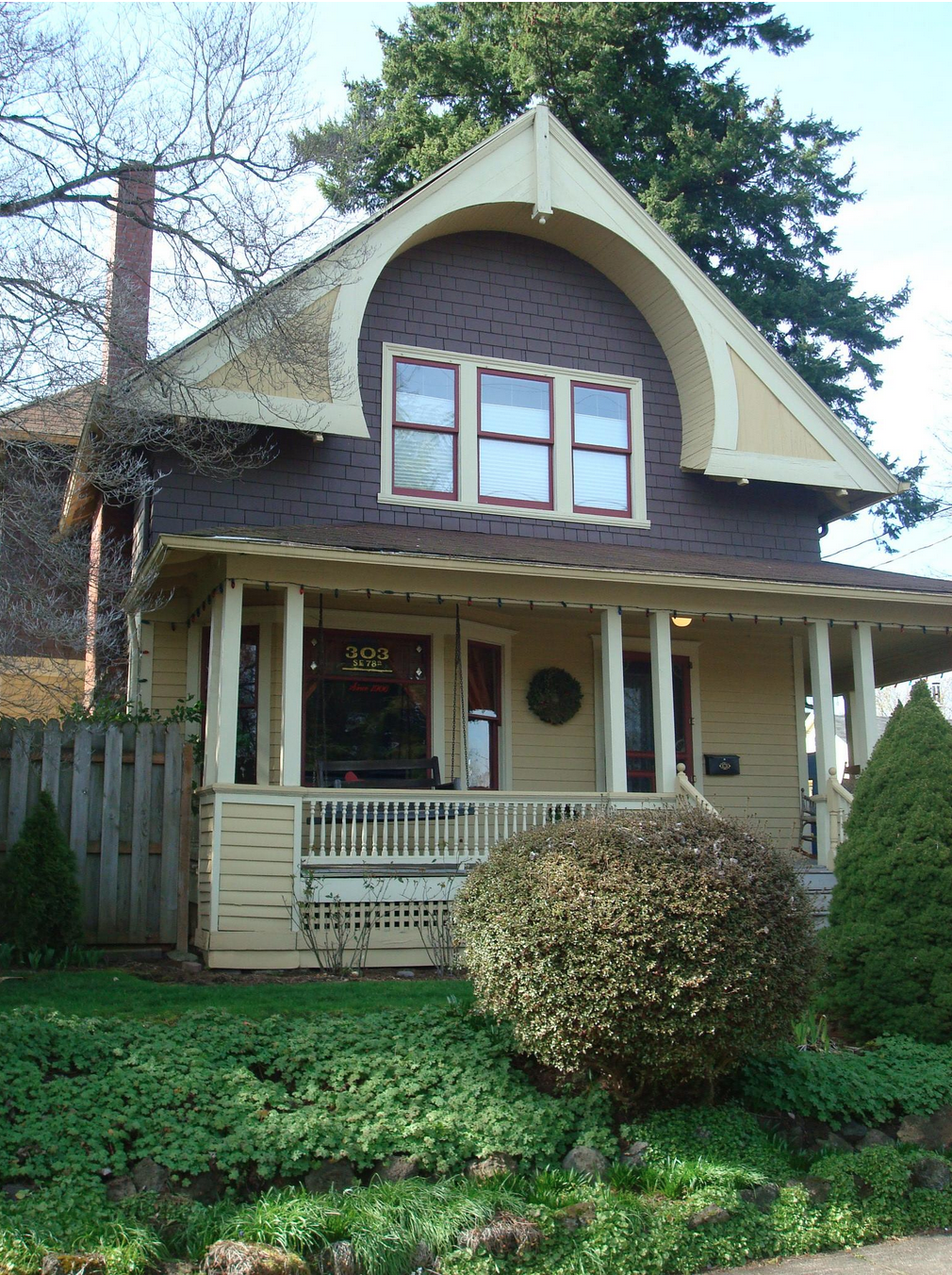A Queen Anne for a Horseman
Oct. 17, 2024.
By: Patricia Sanders
The George and Della Howitt House
Since moving to the Montavilla neighborhood in 2013, I’ve become a devoted wanderer of Montavilla streets. I love looking at homes built over 100 years ago and each time noticing unique details.
The 1907 Queen Anne house at 303 SE 78th Avenue at the corner of Pine Street is particularly fascinating. Yes, it has many typical Queen Anne features — a gable roof, a wrap-around porch, an asymmetrical façade, and bay windows, for example. But there is one striking feature that drew my attention to this house: the large arch above the main entrance.
Only a few houses in Montavilla have arch details at all and they are smaller and usually semi-circular. The arch in the Howitt-house gable is not only extra-large, but also slightly pinched in at the bottom, like certain moon-gates. There is no way to know whether the original owners liked this particular detail because it reminded them of a horseshoe, but it is certain that the original owner, George Kyle Howitt (1876-1945), was a horseman through and through. He rented and sold horses. He used horses in his excavation business. He even raced horses.
George K. Howitt (1876-1945). Source: The Oregon Daily Journal, May 7, 1911
You might say George owed this home to horses. Income from his horse dependent businesses allowed him, his wife Della Phoebe Foster (1879-1956) and their two daughters, eight-year-old Lela (1899-1979) and five-year-old Edna (1902-1986) to move here from their much smaller house in the Kinzel Park subdivision south of SE Stark Street.
Horses had always been part of his life, from his earliest days on his father’s farm in eastern Multnomah County to his own farm in Gresham. By 1903, he and his own family were living in Montavilla, where George opened a livery stable. His Montavilla Livery Barn was located at the corner of what is now SE Stark Street and SE 78th Avenue, the south end of the block where his 1907 home is located. Like other livery stable owners, he rented and sold horses.
Ad for Howitt’s Montavilla Livery Barn in the September 23, 1904 edition of The Oregonian
By 1906, he had an excavation contracting business. With mechanical power still in the future, he used teams of horses to build sidewalks and streets for a growing city.
Sidewalk contractors identified their work by imprinting their firm’s name, and often the date of execution, into wet concrete. These G. K. Howitt stamps are located at the corner of SE Alder Street (left) and SE 71st Avenue and on a step in front of the 78th Street Howitt House (right).
With his businesses thriving, in 1907 he bought the two lots at 78th and Pine. Howitt was not a building contractor, so presumably he hired an architect or contractor to build the house we see today.
Detail from the 1908-1909 Sanborn fire insurance map. The Howitt house is at the top and Howitt’s first livery stable is at the bottom right.
Ad for G. K. Howitt’s various businesses, which now includes coal. His partner, I. T. Howitt, was his cousin. Beaver State Herald of July 27, 1906
In his spare time, George Howitt raced horses. He participated in harness races at the 1907 Rose City Park Racetrack (now the Rose City Golf Course), the Multnomah County Fair racetrack in Gresham, and elsewhere.
Rose City Park Racetrack. Photo credit: Architectural Heritage Center
George’s older brother, Thomas Richard Howitt (1868-1941), who had wholesale and retail meat businesses in Gresham, was also an enthusiastic harness racer. Sometimes the two brothers raced each other. In the July Fourth race at the Multnomah County Fair racetrack, for example, Thomas took first place and George was second in the same race.
Thomas R. Howitt, brother of George Howitt, at an unidentified racetrack. Photo courtesy of Wayne Arct, great-grandson of T. R. Howitt
Howitt’s horse sales grew in volume over the years. In 1906, for example, he might have sold ten or fewer work horses, but in 1917 he advertised 40. His biggest sale came in 1917, when the U. S. Army commissioned him to help supply some of the vast numbers of horses required for America’s entry into World War I. Howitt assembled a large herd from local farmers and was paid $119,250.
The Howitts sold their 78th Street house in September, 1920 and moved to North Portland where George continued excavation work, horse-trading, and horse racing. In 1930, he and his wife moved to the Hosford-Abernethy neighborhood and George switched from horse-related pursuits to cattle raising. He died in 1945.
Editor’s Note: As you also walk the streets and sidewalks of Portland, it may mean a little more when you see that sidewalk stamped name and hope it invites your curiosity to find out more about the people then and now that called it home.
Patricia Sanders is a Historian who focuses on the Montavilla. You can find more of her writing at VillagePortland.com and at “Montavilla News”.








